What are the Key Factors Used to Classify Industrial Robots?
Contributed By DigiKey's North American Editors
2024-04-16
Millions of industrial robots are active in Industry 4.0 factories around the world. They are used to increase production rates, improve quality, reduce costs, and support more flexible and sustainable operations. Because of the importance of industrial robots, the International Organization for Standardization (ISO) developed standard 8373:2021, Robotics Vocabulary, to define terms used in robotics and provide a common language for discussing the many types of robots and their applications.
The International Federation of Robots (IFR) used key terms defined in ISO 8373:2021 to identify six robot classifications based on their mechanical structure, including:
- Articulated
- Cartesian
- Cylindrical
- Parallel/Delta
- Polar
- SCARA
This article reviews ISO 8373:2021, looking at the four key terms that define a robot, focusing on the need for reprogrammability and the types and numbers of robot joints used by the IFR to develop robot classifications. It then digs into the details and nuances of each robot classification and presents exemplary robots from several makers. Along the way, it also looks at systems called robots that don't meet all the ISO requirements.
ISO 8373:2021 defines an industrial robot as an "automatically controlled, reprogrammable, multipurpose manipulator, programmable in three or more axes, which can be either fixed in place or fixed to a mobile platform for use in automation applications in an industrial environment."
Reprogrammability is a crucial differentiator. Some industrial machines may have manipulators and move in multiple axes that can handle specific tasks like picking up bottles on a beverage filling line and placing them into a box. But it's not a robot if it's dedicated to that single purpose and not reprogrammable. "Reprogrammable" is defined in ISO 8373 as "designed so that the programmed motions or auxiliary functions may be changed without physical alterations."
Types and numbers of robot joints
ISO 8373 defines two types of robot joints:
- Prismatic joint, or sliding joint, is an assembly between two links that enables one to have a linear motion relative to the other.
- Rotary joint, or revolute joint, is an assembly connecting two links that enables one to rotate relative to the other about a fixed axis.
The IFR has used these and other ISO 8373 definitions to identify six industrial robot classifications based on their mechanical structure or topology. In addition, different robot topologies have different numbers of axes and, therefore, different numbers of joints.
The number of axes is a key characteristic of industrial robots. The number of axes and their types determines the robot's range of motion. Each axis represents an independent motion or degree of freedom. More degrees of freedom result in a robot being able to move through larger and more complex spaces. Some robot types have a fixed number of degrees of freedom, while others can have different numbers of degrees of freedom.
End effectors, also called end-of-arm tooling (EOAT) or "multipurpose manipulators" in ISO 8373, are another important element in most robots. There's a wide range of end effectors, including grippers, dedicated process tools like screwdrivers, paint sprayers, or welders, and sensors, including cameras. They can be pneumatic, electric, or hydraulic. Some end effectors can rotate, giving the robot another degree of freedom.
The following sections begin with the IFR definition for each robot topology and then examine their capabilities and applications.
Articulated robots have three or more rotary joints.
This is a large class of robots. Articulated robots can have ten or more axes, with six being the most common. Six-axis robots can move in x, y, and z planes and pitch, yaw, and roll rotations, enabling them to mimic the movement of a human arm.
They are also available with a wide range of payload capacities from under 1 kg to over 200 kg. The reach capabilities of these robots also vary widely from under 1 meter to multiple meters. For example, the KR 10 R1100-2 from KUKA is a six-axis articulated robot with a maximum reach of 1,101 mm, a maximum payload of 10.9 kg, and a pose repeatability of ±0.02 mm (Figure 1). It also features high-speed movements, short cycle times, and an integrated energy supply system.
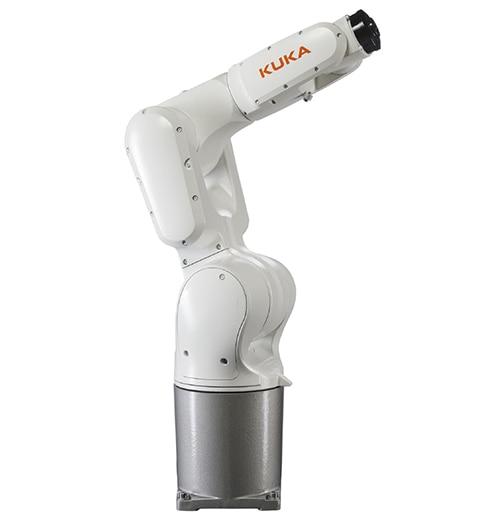 Figure 1: Six-axis articulated robot with a pose repeatability of ±0.02 mm. (Image source: DigiKey)
Figure 1: Six-axis articulated robot with a pose repeatability of ±0.02 mm. (Image source: DigiKey)
Articulated robots can be permanently mounted on the floor, wall, or ceiling. They can also be mounted on tracks on the floor or overhead, on top of an autonomous mobile robot or other movable platform, and moved between workstations.
They are used for various tasks, including material handling, welding, painting, and inspection. Articulated robots are the most common topology for implementing collaborative robots (cobots) designed to work with humans. While a conventional robot operates in a safety cage with safety barriers, a cobot is designed for close interaction with people. For example, the LXMRL12S0000 cobot from Schneider Electric has a maximum reach of 1,327 mm, a maximum payload of 12 kg, and a pose repeatability of ±0.03 mm. Cobots often feature collision protection, rounded edges, force limits, and lighter weight for enhanced safety.
Cartesian robot (sometimes called a rectangular robot, linear robot, or gantry robot) has a manipulator with three prismatic joints whose axes form a Cartesian coordinate system.
Modified Cartesian robots are available with two prismatic joints. Still, they don't meet the ISO 8373 requirement that they must be "programmable in three or more axes" and so aren't technically robots.
There's more than one way to configure three prismatic joints and, therefore, more than one way to configure a Cartesian robot. In a basic Cartesian topology, all three joints are at right angles, with one moving in the x-axis, attached to a second one moving in the y-axis, that's attached to a third one moving in the z-axis.
Although often used as a synonym for a Cartesian robot, the gantry topology is not identical. Like a basic Cartesian, gantry robots support linear motions in three-dimensional space. But gantry robots are configured with two base x-axis rails, a supported y-axis rail spanning the two x axes, and a cantilevered z-axis attached to the y-axis. For example, the DLE-RG-0012-AC-800-800-500, from Igus, is a gantry robot with an 800 mm x 800 mm x 500 mm work area that can carry up to 5 kg and move at up to 1.0 m/s with a repeatability of ±0.5 mm (Figure 2).
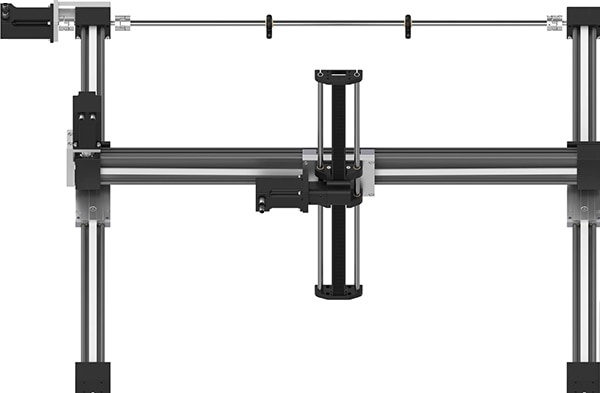 Figure 2: Gantry robot with an 800 mm x 800 mm x 500 mm workspace. (Image source: Igus)
Figure 2: Gantry robot with an 800 mm x 800 mm x 500 mm workspace. (Image source: Igus)
Cylindrical robot has a manipulator with at least one rotary joint and at least one prismatic joint, whose axes form a cylindrical coordinate system.
Cylindrical robots are relatively simple and compact, and their limited range of motion makes them easy to program. They are less common than their more complex cousins. Still, they are especially suited for applications like grinding processes, palletizing, welding (especially spot welding), and material handling, for example, loading and unloading semiconductor wafers into cassettes in an integrated circuit fabrication operation (Figure 3).
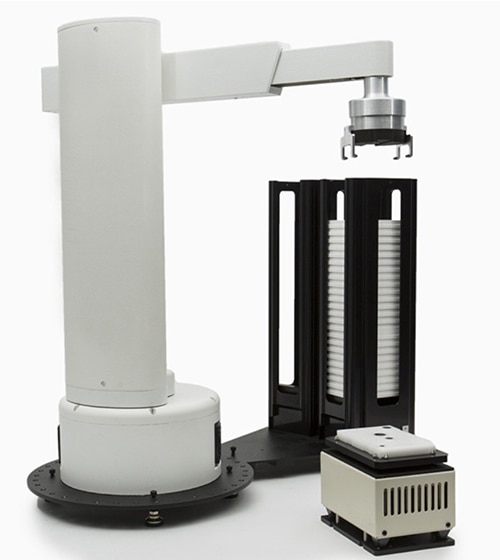 Figure 3: This cylindrical robot has one rotary and prismatic joint. (Image source: Association for Advancing Automation)
Figure 3: This cylindrical robot has one rotary and prismatic joint. (Image source: Association for Advancing Automation)
Cylindrical robots typically move at speeds of 1 to 10 m/s, and they can be designed to carry heavy loads. Applications for cylindrical robots can be found in automotive, pharmaceutical, food and beverage, aerospace, electronics, and other industries.
Parallel/Delta robot is a manipulator whose arms have links that form a closed loop structure.
While other robots, like cylindrical or Cartesian topologies, are named after their motion, the delta robot is named for its upside-down triangular shape. Delta robots have 2 to 6 axes, with 2- and 3-axis designs being the most common. Like 2-axis Cartesian robots, 2-axis delta robots don't technically meet the requirements of ISO 8373 to be called robots.
Delta robots are designed for speed rather than strength. They are mounted above the work area and perform functions like pick-and-place, sorting, disassembly, and packaging. They are often found above a conveyor, moving parts down a production line. The gripper is connected to long, slender mechanical linkages. These linkages lead to three or four large motors at the robot's base. The other end of the linkages is attached to a tooling plate where the EOAT attaches.
The RBTX-IGUS-0047 from Igus is an example of a 3-axis delta robot. It has a working space diameter of 660 mm and can handle a maximum load of 5 kg. When handling a load of 0.5 kg, it can perform 30 picks per minute move with a maximum speed of 0.7 m/s and an acceleration of 2 m/s2. It has a repeatability of ±0.5 mm (Figure 4).
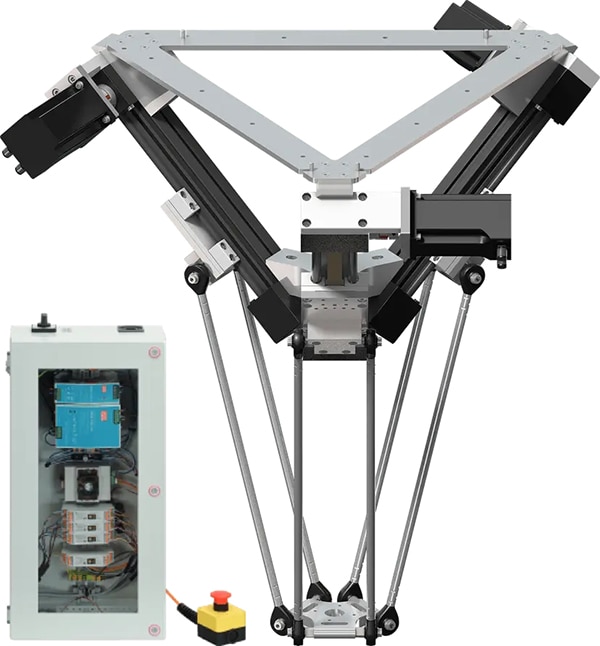 Figure 4: Three-axis delta robot and controller (left). (Image source: DigiKey)
Figure 4: Three-axis delta robot and controller (left). (Image source: DigiKey)
Polar robot (spherical robot) is a manipulator with two rotary joints and one prismatic joint, whose axes form a polar coordinate system.
One of the rotary joints enables a polar robot to rotate around the vertical axis that extends up from the base. The second rotary joint is at right angles to the first rotary joint and enables the robot arm to swing up and down. Finally, the prismatic joint enables the robot arm to extend or retract from the vertical axis.
Polar robots, while simple in construction, have drawbacks that limit their use compared with other topologies like articulated, Cartesian, and SCARA robots:
- The spherical coordinate system makes programming more complex.
- They typically have a more limited payload capacity than other types of robots.
- They are slower than other robots.
The main benefits of polar robots include a large workspace and high precision. They are used for machine tool tending, assembly operations, material handling in automotive assembly lines, and gas and arc welding.
SCARA robot (from "selectively compliant arm for robotic assemblies") is a manipulator with two parallel rotary joints to provide compliance in a selected plane.
A basic SCARA robot has three degrees of freedom, the third from a rotating end effector. SCARA robots are also available with an additional rotary joint for a total of four degrees of freedom, enabling more complex motions.
SCARA robots are often used in pick-and-place or assembly applications where high speed and high accuracy are needed. For example, Dobot's M1-PRO is a 4-axis SCARA robot with a working radius of 400 mm, a maximum payload of 1.5 kg, and a repeatability of ±0.02 mm. It has sensor-free collision detection and drag-to-teach programming, making it suitable for use as a cobot as well as a standalone robot (Figure 5).
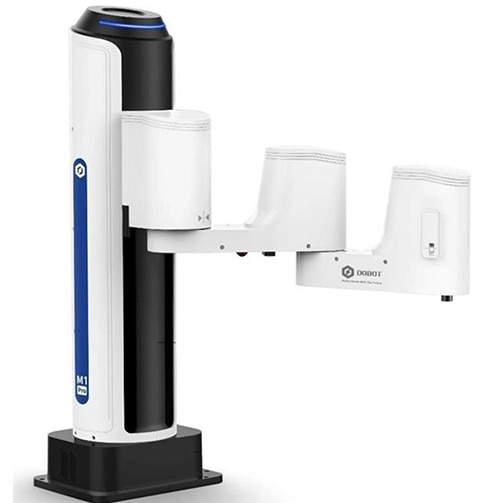 Figure 5: Four-axis SCARA robot with a repeatability of ±0.02 mm. (Image source: DigiKey)
Figure 5: Four-axis SCARA robot with a repeatability of ±0.02 mm. (Image source: DigiKey)
Conclusion
All industrial robots meet the ISO 8373 requirement to be automatically controlled with a reprogrammable, multipurpose manipulator. However, not every design has a defined number of axes for a specified topology. Delta and Cartesian robots are available with fewer than the defined number of axes, while some SCARA robots have more axes than defined by IFR.

Disclaimer: The opinions, beliefs, and viewpoints expressed by the various authors and/or forum participants on this website do not necessarily reflect the opinions, beliefs, and viewpoints of DigiKey or official policies of DigiKey.










